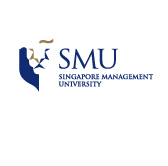Publication Type
Working Paper
Version
publishedVersion
Publication Date
3-2025
Abstract
Singapore aims to achieve 30 percent food self-sufficiency by 2030, known as the 30-by-30 target, and this paper reviews Singapore’s changing landscape for urban agriculture and its recent progress towards the 30-by-30 goal, highlighting key challenges such as land constraints, high production costs, and resource limitations. Building-integrated agriculture (BIA), which utilizes building surfaces such as rooftops, façades, and balconies for food production within urban environments, is examined as a potential way to increase self-sufficiency through a simulation. Despite the BIA’s potential, practical issues—including regulatory concerns and infrastructure limitations—must be addressed before it can be implemented at scale. Insights from Singapore’s experience offer valuable lessons for other dense, land-scarce cities around the globe in seeking to enhance local food and sustainable production and strengthen resilience against supply shocks and disruptions.
Discipline
Asian Studies | Econometrics
Research Areas
Econometrics
Areas of Excellence
Growth in Asia
First Page
1
Last Page
22
Publisher
Paper No. 03-2025
Citation
FUJII, Tomoki; WAIBEL, Christoph; DU, Xinyi; and SHI, Zhongming.
Food self-sufficiency and building-integrated urban agriculture: Lessons from Singapore. (2025). 1-22.
Available at: https://ink.library.smu.edu.sg/soe_research/2802
Creative Commons License

This work is licensed under a Creative Commons Attribution-NonCommercial-No Derivative Works 4.0 International License.


